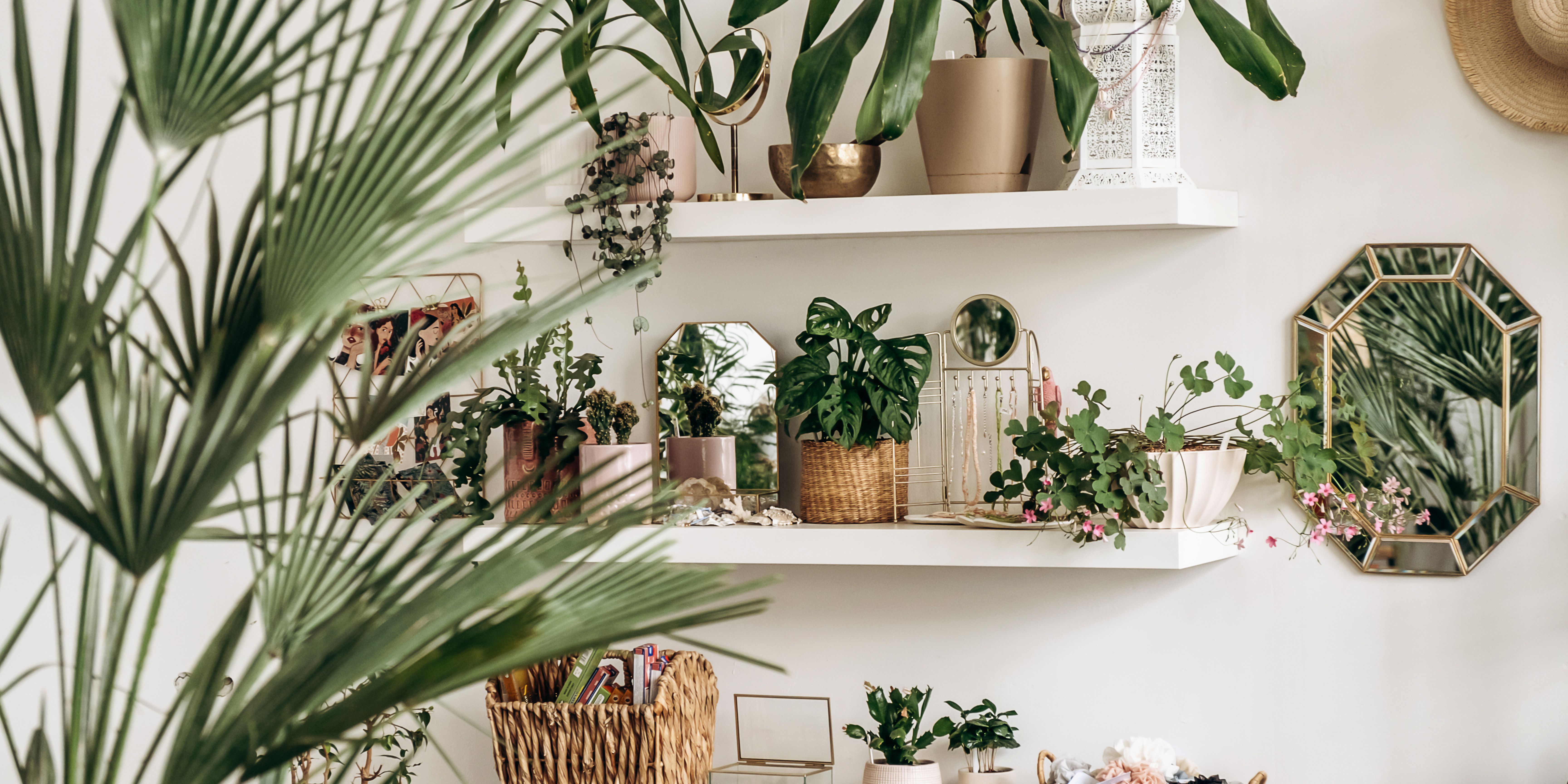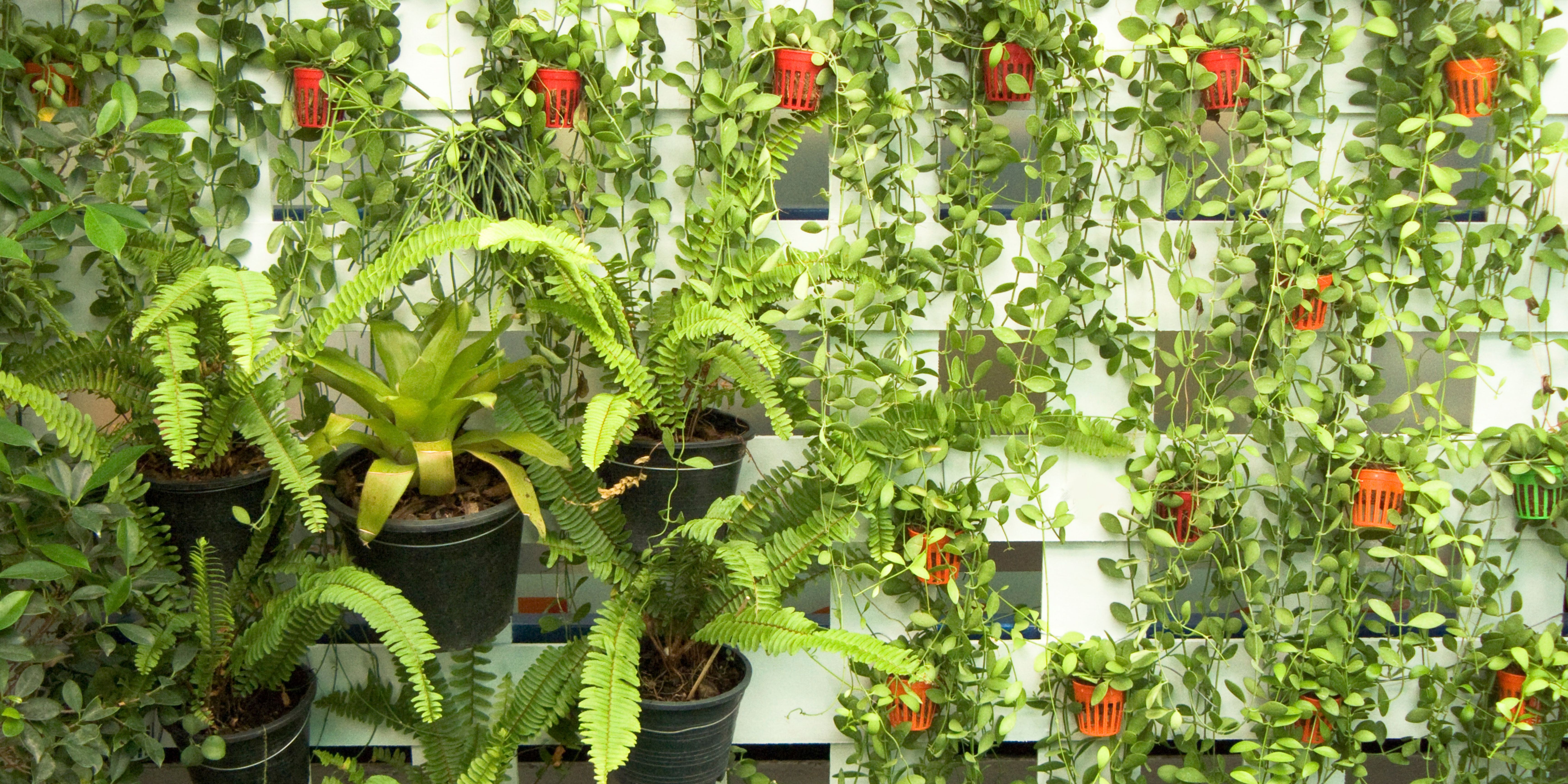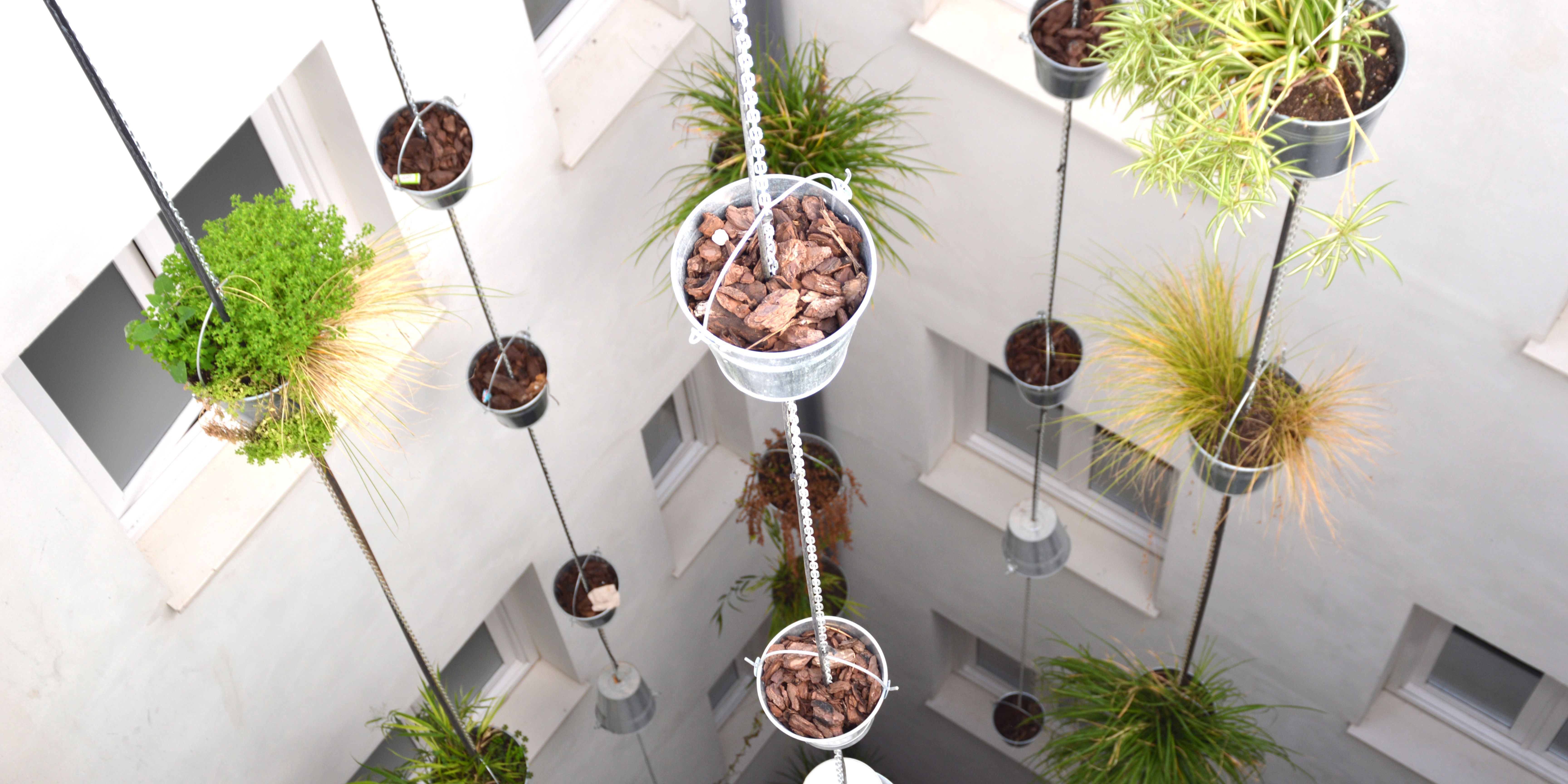What is Vertical Gardening?
Vertical Gardening literally translates to "upright gardening." In fact, it is one of the newest trends, which is focused on practicality. When there is limited space for plants in living spaces or on balconies, vertical gardening comes in handy. In vertical gardening, plants are not placed next to each other, but rather above one another. It doesn't matter what type of plants are chosen. A vertical garden can be designed with houseplants, vegetables, herbs, or perennials. There are no limits to the imagination when planning a vertical garden, whether it's for snacking, improving the climate, or simply as floral decoration. Such a garden can fulfill numerous functions.
Vertical Gardening Indoors

Vertical gardening has been known for quite some time already, with classic climbing plants like ivy. Espalier fruit trees are also a typical variant of vertical plant cultivation. Unfortunately, many balconies, especially in big cities, offer only minimal space for a lush variety of plants. New ideas were needed, thus the concept of vertical plant cultivation was born. Nowadays, there are countless plant species suitable for upright cultivation.
In indoor spaces, vertical plant cultivation is mostly used to create a visual highlight. The new trend is also perfect for improving indoor air quality. Vertical Gardening originated back in the 1970s, known then as Urban Gardening Vertical. Unused spaces in city centers were utilized to make them more appealing through planting, also for sustainable purposes. Flowers and herbs were grown on the walls of inner courtyards. Soon, the primary goal shifted beyond aesthetics alone: there was also a desire to improve air quality in urban areas.
Today, Vertical Gardening indoors has firmly established itself as a trend. Vertical indoor greenery is achievable with hanging plants as well as potted plants. Various types of moss also offer a fantastic opportunity to permanently beautify indoor spaces. In indoor settings, Vertical Gardening is often referred to as a Green Wall. It's crucial to choose a good location with sufficient lighting. During the dreary winter months, heat lamps can be supportive. Regardless of plant selection, thanks to an indoor Vertical Gardening system, air quality and room climate can be improved. Simultaneously, the plants can serve as individual sound barriers. Adequate watering tailored to plant needs is necessary for lush plant growth indoors. There are various irrigation systems, the selection of which depends on the location. It is essential to ensure that the containers used are completely watertight; additionally, a waterproof insulation layer on the wall is recommended. This helps to avoid moisture or even mold formation on the walls, thereby preventing damage to the building structure.
The benefits of vertical gardening can also be excellently integrated into office environments, where they can not only set aesthetic accents but also enhance the well-being and productivity of employees. Installing a green wall in the office promotes a clean, oxygen-rich environment that contributes to reducing stress and supports creative thinking.
Vertical Gardening on your balcony

When planning Vertical Gardening on a balcony, comprehensive preparation is important. In a rental apartment, it is advised to obtain permission from the landlord, depending on the size of vertical garden you are planning for. The following questions should also be considered:
- How will the system be watered?
- Which plants are suitable for the location?
- How strong are the wall and ceiling?
- Should the plant wall also serve as a privacy screen?
It is important to consider the lighting conditions on the balcony and select the plants accordingly. Both herbs and vegetables are excellent choices for vertical gardening on the balcony. In summer, the joy of harvesting one's own produce can be significant. Zucchini and tomatoes, for example, thrive abundantly in a sunny spot. Flowering plants bring color to the balcony. Popular flowering plants for vertical gardening on the balcony include climbing nasturtiums, which are even edible, as well as trailing petunias or geraniums and mandevillas. For perennial flowering plants on the balcony, dwarf broom or winter jasmine are good choices. To ensure long-lasting enjoyment of a blooming balcony, the use of high-quality fertilisers such as fertilisers and nutrient complexes is recommended.
Ideal Tools
On our website, there are numerous Hesi products that contribute to lush plant growth. Our boosters, such as the Hesi Root Complex, for example, help young plants develop quickly. On the other hand, SuperVit is a kind of magic potion for your plants: only a few drops are needed, and the plants are provided with all the necessary vitamins and amino acids. Click here for the products.
The advantages of vertical gardening
Vertical gardening on balconies in urban areas is becoming increasingly popular for good reason: this method of plant cultivation in cities is environmentally friendly because it eliminates packaging waste and transportation routes. At the same time, air quality is improved. Experts even believe that a lush vertical greening can lower air temperatures in city centers.
Which plants can I use for vertical gardening?

When selecting plants for a Vertical Gardening system, there are almost no limits. In indoor settings, all trailing plants, such as ivy, are naturally ideal. When planning your own balcony vegetable garden in a Vertical Gardening system, shallow-rooted vegetables prove to be the most suitable. The plants should not become too lush. Cress and radishes, as well as scallions or sugar peas, thrive well in the vertical garden. Potatoes and tomatoes, on the other hand, are only moderately suitable for this type of cultivation. Most herb varieties also fit well with Vertical Gardening on the balcony. Chives, rosemary, lavender, and thyme are perennial plants that can be planted on the balcony as early as March. Basil, dill, and cilantro, which are very heat-loving, should therefore only be moved outdoors from May onwards. For a simple and minimalist style, basic green plants also suit the Vertical Gardening system on the balcony. With coleus, silver falls, eucalyptus, and ivy, simple yet visually appealing green walls can be created. It is important to select plants with similar location requirements.
In addition to the ideal plants, the new idea of gardening also requires the appropriate tools. In private settings, besides vertically mounted plant containers, pallets, ladders, or repurposed wine crates have proven to be useful. Whether it's a self-designed DIY project or an intelligent self-sufficient wall system: thanks to Vertical Gardening trend, the available space is utilized to its fullest potential.
Various applications of vertical gardening:
Ground-based vertical gardening is well-known. Soil that meets the plants' requirements is selected, and they are planted directly. But has hydroponics vertical gardening already been considered? In contrast to traditional soil-based agriculture, plants in hydroponic cultivation are not directly placed in the soil; instead, they are first introduced to a nutrient solution. Here, they are provided with all necessary nutrients and thrive much faster and stronger.
This system has proven particularly effective for crops such as leafy vegetables. Hydroponics can indeed be applied in vertical gardening. In fact, it is even less labor-intensive than soil-based cultivation. Vertical planting columns and wall systems are best suited for hydroponic systems. There are also wall or table systems for indoor use. They all have in common that irrigation is automatic, reducing labor while still enabling lush plant growth and harvest yields.
On our website under products, you can find numerous products that faciliate gardening. Specializing in providing easily applicable fertilizers, these high-quality fertilizers guarantee optimal plant growth, whether for the root or bloom complex. Products are offered for both hydroponic cultivation and traditional planting in soil. The most popular products can be found under HESI products.
- Cultivation Tips : Inspiration , Plant Care , Hesi Products , Cultivation Tips
 Deutsch
Deutsch  Français
Français  Español
Español 
.jpg?ts=1711702812)